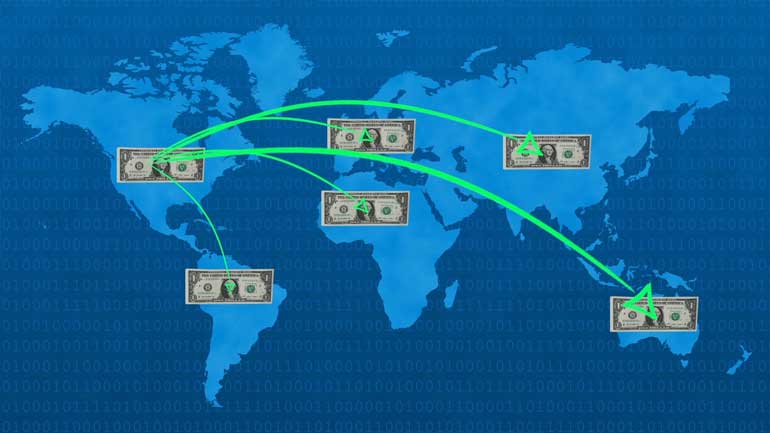ShmoopTube
Where Monty Python meets your 10th grade teacher.
Search Thousands of Shmoop Videos
Personal Finance Videos
Play All
What is bankruptcy? Deadbeats who can't pay their bills declare bankruptcy. Either they borrowed too much money, or the business fell apart. They t...
What's a dividend? At will, the board of directors can pay a dividend on common stock. Usually, that payout is some percentage less than 100 of ear...
What rights does a public stockholder have? Common shareholders elect the board of directors. They vote. They have the right to quarterly financial...
What is a strike price? Strike prices are used in conjunction with options. Calls and puts give investors the right to buy or sell stocks at predet...
What is the Efficient Markets Theory? The Efficient Markets Theory says that stocks trade at their fair value all of the time, assuming all informa...
What is net worth? You own $100,000,000 worth of Coke stock. That's the good news. Unfortunately, you also have $90,000,000 in debt. Your net worth...
What is a corporation? Corporations are legal bodies. Bodies exist in various forms: LLC (Limited Liability Corporation), S-Corporation (now with p...
What is liquidity? Think: water. It's liquid. It can be squeezed into little, tiny spaces and infused into large spaces. A defining trait of liquid...
What does it mean to "go public?" An IPO raises cash in the form of equity, usually, for investors. When public, a company exists under SEC dominio...
What is equity? It's ownership. A stock, not a bond. A common shareholder, not a debt obligator. When you own one share in a million-share outstand...
What is common stock? Ownership. Common shareholders own a pro rata slice of the pie. They elect the board of directors by vote. Some companies hav...
What is par value? The notional value of a stock or bond before an offering takes place. When a company is started, founders come up with a par val...
How are risk and reward related? Take more risk, expect more reward. A lottery ticket might be worth a billion dollars, but if the odds are one in ten billion that you win, then it's a bad bet, ten times over.
What do you need to retire? Retirement - think: 401k, pension fund, IRA, roth IRA, etc. All of these savings socked away while you worked hard are tax-deferred. Ordinary income tax gets applied when you take the money out and actually use it.
Who invests in stocks? 401k plans, pension funds, institutional investors, banks, traders, clients of Schwab, Fidelity, and Franklin. Joe Blow buys stocks. It's likely you own stocks. They are the retirement investment vehicle of the masses.
What is the "time value" of money? A dollar today is worth more than a dollar tomorrow. You can always invest your cash and earn a return.
What is the difference between Normal, Inverse/Inverted, and Flat Yield curves and what do they tell us? Normal yield curves represent long-term interest rates being more favorable than short-term rates. Inverted curves represent the opposite, that short-term rates are more favorable. When this happens, usually something pretty drastic is happening in the market like a crash. If the yield curve is flat, rates are about the same. So, this flat period happens between normal and inverted, and is kind of a warning that a recession may be on the horizon.
What are the types of income tax? Federal income tax. State income tax. Real estate tax. Value Added Tax (VAT). Some tax is progressive, some tax is regressive. The commonality: they're all bad.
What is the difference between common and preferred shares? Common stock is at the bottom. It comes at the very end, when a company is sold, in the priority stack. It sits behind bank debt, the IRS, preferred stock, and pretty much everything else. The big advantage of common stock? It is the proletariat of investing: common stock shareholders elect the board of directors, who then are responsible for managing the company from 37,000 feet.
What is amortization? Amortization tracks the decline in value of a contract or service, usually paid for in advance. You received $10,000 in advance to water Ms. Maple's lawn for 10 months. She amortizes your watering to the tune of a decline in value of that contract of $1,000 as each month goes by.
How do you become incorporated? Go to Legal Zoom. Pay $150, file with the state of Delaware or whoever each year. Pay another $150. Most file as LLCs when they are small, so the costs are low.
What is spread (bid-ask)? The bid-ask spread compares how much a buyer will pay to how much the seller will sell for. The asking price is what the seller wants, while the bid is how much the buyer offers; the spread looks at how much higher the ask is than the bid.
WACC is an acronym for weighted average cost of capital. A company can raise money either through selling equity or by raising debt. When measuring equity, it is essentially the amount of money a company needs to make to keep shareholders from selling. In the case of debt, it is the cost of the principal and interest, along with payment terms, which can constrict cash flow. WACC is a calculated estimate that analysts often use. Ironically, the higher a stock price rises, the greater the cost of equity capital, as shareholder expectations are reset at a higher bar.
Financial projections are calculations for profit and loss after factoring in expenses, gross revenues, cash flow, debt, and a host of pertinent financial circumstances that apply to a particular company and/or project. The projections may be broken down into micro level, as daily and weekly...to macro level, as 5 to 10 years+. Financial projections are key to managing expectations, and for managerial decisions that will affect risk, speed of growth, schedules for different project implementation steps, and many other project management related criteria. They are also key to assessing how long a company in an industry with a long pre-revenue cash burn R&D period, such as Biotech, may take to finally become profitable. Most public companies’ stock prices are very dependent upon quarterly projections and whether or not the company surpassess, falters, or meets the projected numbers that analysts have calculated and published.
If you go to an arcade and want to play coin-operated games, you will often exchange $1 bills for (4) quarters at a time. This is the equivalent of a 1 for 4 stock split. The net value is the same, but you have more small units instead of a single larger one. The advantage for a stock is that its lower price represents an easier entry level for new investors to get involved, since buying shares of a stock at 25 is easier for an initial portfolio allocation than at 100. A forward split is usually an indication that a company is growing and attracting more investors. Conversely, a reverse split would be like getting a dollar for your 4 quarters. Reasons for a reverse split could be too much stock outstanding to move the stock price, flushing out naked short sellers, or a post reverse merger stock overhang cleanup.
What is a 409a valuation? Taking its name from the IRS section 409A code, a 409A valuation is an independent analysis and appraisal of a company’s fair market value, which can determine a company’s IPO price or option strike price. It is valid for 12 months The 409A provides the company with provisions under the Safe Harbor rules, which protect companies from frivolous suits over accusations of misstatements over financial matters and other material events. A new 409A valuation is advisable after reporting any new material event.
What are operating profits, net profits and gross profits? Profits for a company can be calculated several different ways depending on what metric is being cited. Gross profits are measured by total revenues minus cost of goods or services sold. Of course, a company also has operating expenses, as well as depreciation and amortization, which are accounting deductions on equipment and other property belonging to the company. The Operating profit subtracts those elements from the Gross profit. The Net profit also factors in taxes and interest, which are also company costs that can apply against revenues. Naturally, the Net profit will result in the smallest number. Gross profit is also sometimes referred to as EBITDA, which is Earnings Before Interest, Taxes, Depreciation and Amortization.
What is a term sheet? When parties have negotiated terms between themselves for an ensuing transaction, a term sheet, or memorandum of understanding, will often be written, which outlines the pertinent details of what, where, how and when of the transaction in question in a non-binding document. It usually will serve as the reference from which the attorneys will draft the actual contract and add in all of the legalese provisions, disclaimers, and other clauses for mitigating liability on each side.
The cost of equity is essentially how much the total returns, i.e. capital appreciation plus any dividends, are needed to keep shareholders from selling their stock. The old school way of calculating the cost of equity was to divide the stock price into the annual dividend per share. Of course, a majority of stocks presently do not pay dividends. Some companies calculate the cost of equity by factoring in a stock’s beta, or volatility and risk premium (added return needed to justify when compared to low risk investments) and adding it to its risk-free rate (the compared low risk investment cost).
The inverse relationship refers to the fact that as interest rates go up, bond prices go down, and vice-versa. Bottom line reason is supply and demand. If more people want to buy a bond, the bond itself can pay less interest and still get sold at a higher price, hence the price goes up as interest goes down. If not enough people are interested, the rate needs to rise and price needs to go lower to entice buyers.
When assessing the amount of profitability in a company’s various services and/or products, the contribution margin is a metric that is relied upon for calculation purposes. As a formula, it is a simple Sales minus Variable Costs equation. It is an important tool for gauging pricing. Companies that may be vulnerable due to an over reliance on 1-2 highly profitable products can find themselves in a cash crunch if one of the Variable Costs suddenly becomes more expensive and the company has a cap on how high in can raise prices without losing competitiveness with its rivals. A manager’s ability to reduce Variable Costs will increase the contribution margin and hopefully allow for increases in sales, and commensurate incentive bonuses.
What is a sinking fund? Companies that issue bonds pay the interest coupon amount each year and are required to redeem all of the principal at maturity. In order to better manage the sudden cash crunch of a large loan repayment in a single year, some bonds are structured with sinking funds, which are set aside pools of cash from each year’s operations that are used to buy back bonds in the open market and retire them. This reduces the amount of outstanding bonds that have to be paid off at maturity, as well as reduces annual interest payment obligations. A bond with a sinking fund often gets a ratings bump up from a comparable issue from the same company due to the reduced chance of default.







































